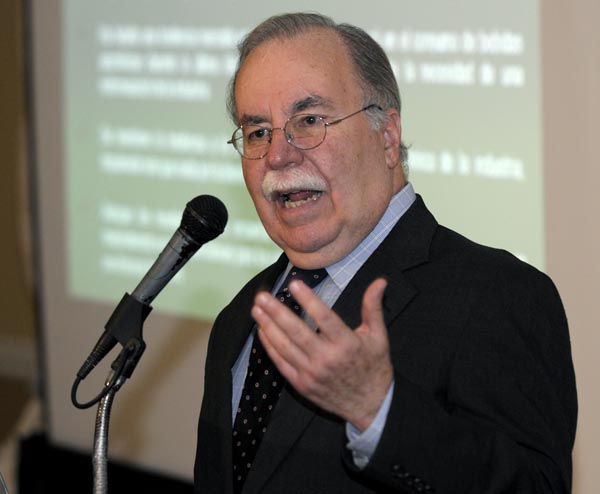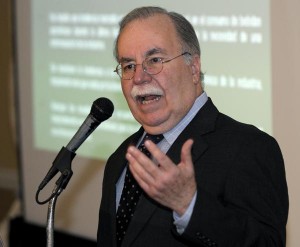Sluggish Internet adoption rates stunting P.R.’s economic growth

Puerto Rico’s low broadband penetration and Internet usage levels are holding the island back from achieving true economic growth, industry experts agreed Wednesday, saying that with just 40-out-of-100 people using the Internet, progress is — and will likely remain — stunted.
Part of the solution to that problem could lie in a less regulated telecom environment, economist Joaquín Villamil, of the Estudios Técnicos analyst firm, said during the Puerto Rico Telecom Conference hosted by the Puerto Rico Chamber of Commerce.
For the most part, the Telecommunications Regulatory Board, created in 1996, oversees the island’s telecom sector. However, Villamil said a new vision is needed to look at the sector as one to be promoted, and not just regulated.
“The IPTV issue illustrates the need for a new public policy that looks upon telecom as a sector to be promoted and not just regulated,” Villamil said, referring to the much-publicized process of granting Claro a cable franchise license to deploy islandwide Internet-based TV. “Telecom technologies are enabling technologies.”
He cited Singapore as an example, saying a so-called Media Development Authority oversees the sector through “co-regulation,” involving industry players in formulating regulation and giving their input and feedback.
In Puerto Rico, the issue of over-regulation has been cited as the culprit of low wireless penetration rates as well. While Puerto Rico’s mobile usage level stands at about 80 percent, the level in the U.S. is now at 107 percent, leaving much room for local growth.
The numbers
For Puerto Rico’s Chief Information Officer Juan Eugenio Rodríguez, the island’s broadband penetration and computer ownership rates are “unacceptable,” at 31 percent and 55 percent, respectively
“The more network-ready a country is, the higher its per-capita level is and the more prosperous it is,” he said. “Broadband is not just bits and bytes, but about social and economic development of our nation.”
The CIO’s office, responsible for tracking Puerto Rico’s broadband availability and how much it is being used, has found that the island is significantly behind in terms of speed in comparison to other U.S. jurisdictions.
Its numbers show that 86 percent of all households have access to download speeds of 768 kilobits per second, or the lowest speed for broadband.
“This is lower than even Alaska, and the U.S. as a nation, which is at 95 percent,” he said, noting that 57 percent of residents, mostly in the San Juan metropolitan area, access speeds of 3 megabits per second. The number drops to 41 percent when looking at the segment of the island’s population that can tap into download speeds of 6Mbps.
“This is unacceptable. Who can participate in the digital revolution with this kind of coverage?” he noted. “Puerto Ricans aren’t participating in the social media revolution, from what we’ve found so far.”
The gaps, he said, present opportunities for local telecom companies, which could potentially capitalize by doing business in the underserved market. Only 31 percent of Puerto Rico residents have broadband in the home, Rodríguez noted.
Providers could tap into the recently approved Connect America Fund subsidies program to deliver fixed broadband services to underserved areas.
P.R. on the national radar
While Puerto Rico’s broadband statistics seem paltry in comparison to the rest of the nation, Anna Gomez, deputy administrator of the U.S. Department of Commerce’s National Telecommunications and Information Administration, said the island is not alone in its plight.
“We survey the mainland’s population to determine why they don’t use Internet at home, why they don’t use broadband and our results are similar to what you see in Puerto Rico: the top reason people give is that they don’t see a need for it, or a value,” she said. “That is worrisome considering that it is so important to have broadband access to participate in the global economy.”
Meanwhile, people who said they use the Internet outside the home said affordability issues hold them back from signing up for a plan at home.
“So we try to take these practices to understand what we can do, or advise others to do, to increase adoption. What we’ve done through grant programs is leverage what we’ve learned. Digital literacy is very important,” she said.
Puerto Rico has actively benefited from the NTIA’s grant programs, getting a combined $40 million in funding through the American Recovery and Reinvestment Act for initiatives such as the CIO’s broadband map, the Puerto Rico Bridge Initiative and the INTECO project announced last week.
As per the NTIA’s conditions for funding, the island’s broadband infrastructure projects should be completed by 2013, which Gomez believes “will have a great benefit for broadband growth and adoption.”
She also said because the federally funded networks must enable interconnection with individual service providers, they will then be able to afford delivering service to their areas. That gains special importance in Puerto Rico, where geographical conditions often make that task more difficult and expensive.














